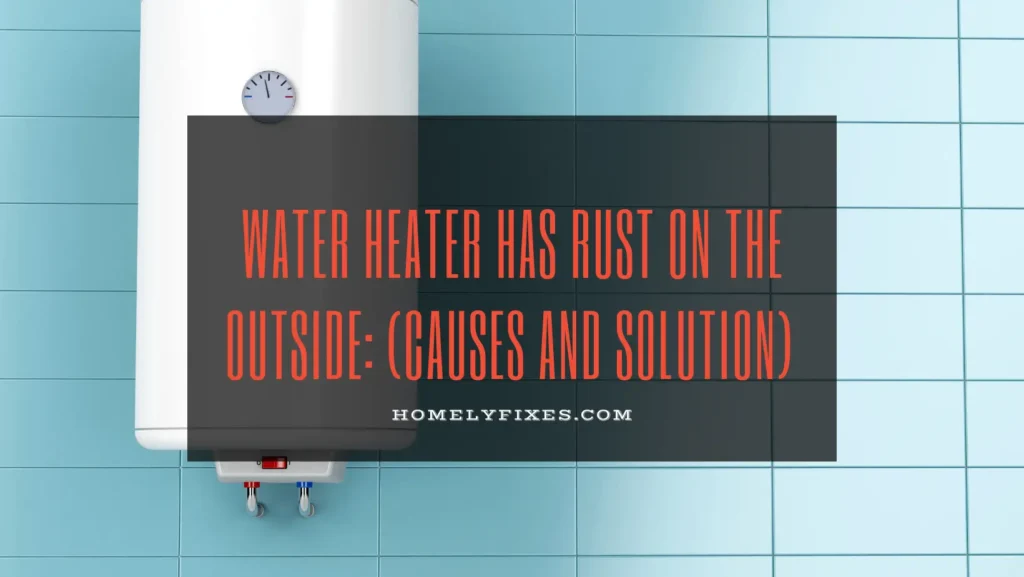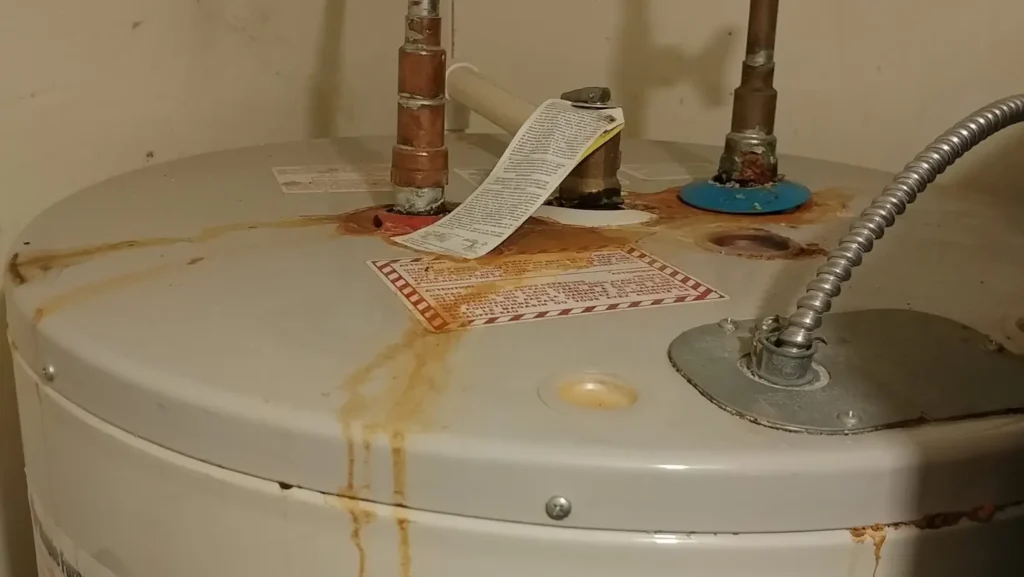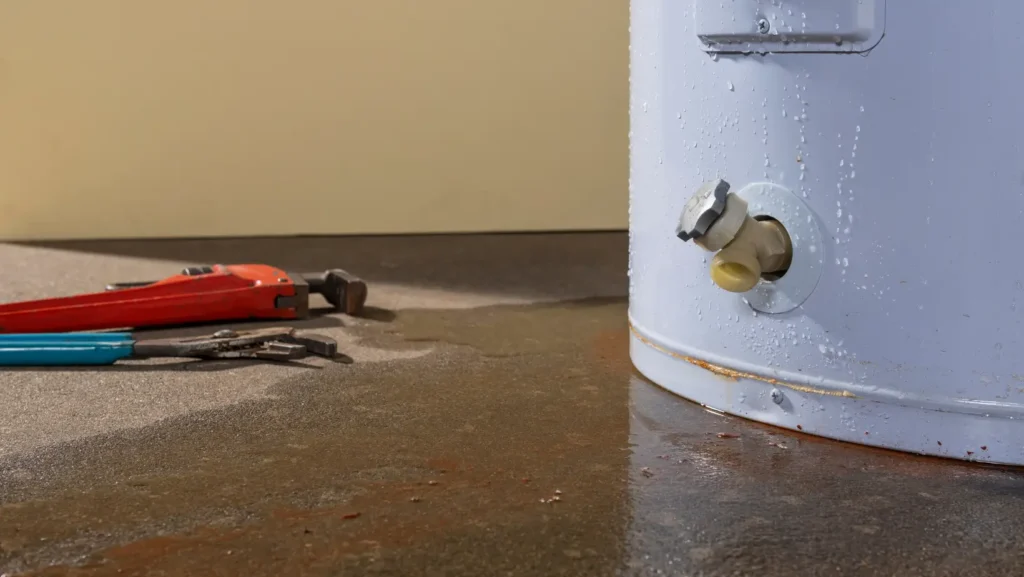
Are you beginning to notice rust on the bottom or top of your water heater? Or is your faucet starting to dispense colored hot water? That is not something to overlook. When a water heater starts to rust on the outside, there’s a good chance it’ll develop leaks and cracks that can cause severe damage to your home.
This article explains why water heaters rust and offers solutions to prevent leaks from happening again.
Summary – Rust on the outside of a water heater can be caused by a damaged anode rod, external leaks on the tank, hard water, exposure to flood and standing water, and an aging water heater. Although water heater rust is inevitable in the long run, you can prevent and remove rust from your water heater by ensuring regular inspection, maintenance, and repair of the components.
What Causes Water Heater to Rust on the Outside and How to Fix It?
A water heater is designed to resist rust for many years and will typically last for 10 to 15 years with regular maintenance. It is lined with glass on the inside to keep rust at bay; there is an airtight seal to keep oxygen out; a special device called an anode rod sits inside the water heater to rust rather than the tank.
So, if you notice rust outside your water heater before it is old enough for replacement, it’s crucial to find the cause and fix it. Below are some of the most common causes of rust on a water heater:
1. Deteriorating Anode Rod
The anode rod is a metal lining installed inside the water heater to help prevent rust. The rod is made to rust so that the rest of the tank does not, which is why it is also called “the sacrificial anode rod.”
However, when the rod rusts through completely, it stops doing its job, and the outside tank begins to rust.
The sacrificial anode should be replaced every five years to prevent scale buildup and corrosion on the water heater. So as part of your routine maintenance, check your anode rode to know when it requires replacement.
How to Replace Your Anode Rod
Here’s what to do if you notice the anode rod is wearing out and needs to be replaced:
- Buy a new anode rod from a plumbing supply store. The anode rod comes in a variety of shapes and sizes. So, note the model of your water heater to get the right anode.
- Before replacing the anode rod, turn off the power to the water heater. You can also turn off your house’s circuit breaker and gas thermostat to be on the safe side.
- Now, locate and remove the old anode. The anode rod is usually located on top of the unit and is sometimes directly connected to the hot water outlet line. If you’re having trouble finding the anode, consult the owner’s manual of your heater.
- Remove some of the water from the heater tank. This helps to release some of the weight that is holding the anode rod in place, making it easier to remove it.
- Using a boxed end wrench or a socket wrench, remove the rusted anode.
- To install the new anode, insert the rod by hand and tighten it with the same wrench.
- Switch on the circuit breaker, the water heater, and the gas thermostat to get your unit working again.

2. Hard Water
Hard water is another common cause of rust on the bottom of a water heater tank. For example, if your water source is well, it is most likely hard water with high mineral content such as calcium, magnesium, and iron that settles at the bottom of your tank.
Over time, the sediment buildup in the tank creates an insulating effect, causing the tank to overheat and slowly melt the tank’s protective glass lining. When the glass lining melts, the exposed steel begins to corrode and weaken.
How to fix this
- To fix rust caused by hard water on your water heater, you must flush the heater tank to remove mineral particles. We recommend emptying your water heater’s tank at least once per year to keep minerals from accumulating.
- Another preventative measure is to install a water softener. This helps to keep iron from accumulating in your tank.
3. Standing Water
If your water heater is located in the basement, it is more vulnerable to flooding and damage caused by standing water. Also, when a metal tank is exposed to water for an extended period, it rusts.
How To Fix
The solution is to keep flooding and standing water out of your basement as much as possible. However, if your water heater has been exposed to flooding and standing water for too long and rust has formed on its surface, it is likely beyond repair, and you will need to replace the entire unit.
4. Exposure to Leaking Water

Rust on the top of your water heater could mean that the tank is exposed to dripping water. For instance, your utility room may be too humid, or the outside of the tank may be exposed to water leaking from another pipe.
Possible Solution
To manage this rust problem, always check for leaks on the waterline, washer, and other pipes in the utility room during routine inspections and maintenance. Once the cause of rust has been removed, clean off the rust from the affected area and recoat with a touch of paint.
Note: If water leaks go unchecked for an extended period of time, they can cause serious damage to the entire unit, requiring a replacement.
5. Faulty Pressure-Relief Valve

The temperature pressure-relief valve is designed to release water and reduce the pressure inside the water heater. But if the pressure relief valve fails, the tank is exposed to outside air, causing the oxygen in the air to react with the moisture inside the tank, resulting in rust.
You can call your technician to check the pressure valve to see if it’s working perfectly. If not, you can easily change the valve.
6. Chemical Reaction in the Heat Exchanger
The rust on the heat exchanger could result from a reaction between the combustion gas and the exchanger’s metal. This reaction can also cause the heat exchanger to crack, allowing toxic gases to escape into your home.
As soon as you notice rust forming, you should contact your technician, who will check the exchanger and solve the problem by replacing it if any issue is found.
7. Tank is Old
Rust on your water heater could mean that your unit is old and needs to be replaced. Also, if your water heater is over 15 years old, it’s time to replace it. Simply contact a professional to install a new water heater.
FAQs On Water Heater Has Rust On The Outside
How Can I Tell if my Water Heater is Rusting?
If you notice any of the following signs, your water heater is likely rusted on the inside.
- Discolored water: hot water from the faucet may appear brown, red, or orange as rust begins to break off into the tank.
- Your water heater tank could begin to leak.
Can a Tankless Water Heater Rust?
If water leaks down onto the burners, a tankless water heater can start to corrode. However, this doesn’t often happen because water only comes into contact with the parts of a tankless water heater for a short time. Also, rust flakes can clog the burners, lowering the system’s efficiency and effectiveness and requiring immediate repair.
Is a Rusty Heater Safe
While a rusty heater may not be as efficient as a new one, it can still be safe to use. The key is to ensure the rust is not affecting the integrity of the metal. If the rust is surface-level, it can be sanded down and coated with rust-resistant paint. However, If the rust is more serious, it’s best to have a professional take a look at it. They can determine if the rust is causing any structural damage and if the heater can be safely repaired or needs to be replaced.

